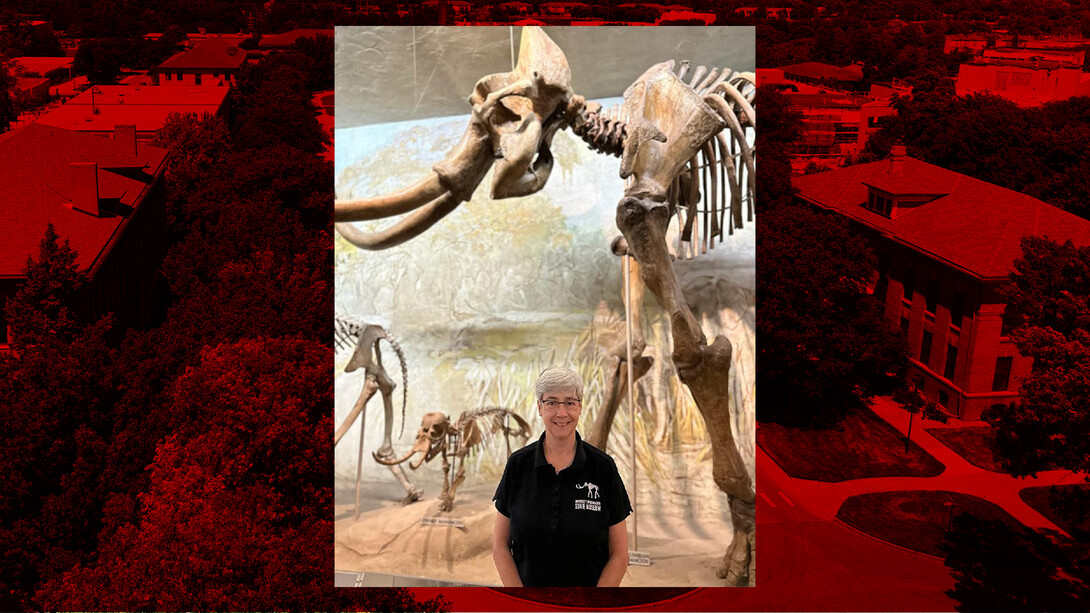
Lincoln, Neb. —Morrill Hall has several five-legged insects in its entomology collections. These pentapedals are not evidence of a new or extinct species but of the increasing use of technology in museum work.
Susan Weller, director of the University of Nebraska State Museum, of which Morrill Hall is a part, recently told NRT students that the museum has been taking DNA from the legs of specimens.
“There are quite a few insects that are five legged instead of six legged in collections because they've had a leg removed and there will be a little label ‘leg away for DNA,’ and then when the barcode or whatever study is done that connects it to the work that was done, that label gets added. So, you have that permanent record associated with the insect,” she explained.
Today’s museums use photography and other technologies like DNA analysis to reach what might be considered a gold standard in their databases, Weller said.
“In addition to adding the data that are associated with the specimen themselves, museums strive to have an image, a geo-referenced location and, in the case of biological specimens or cultural artifacts, an identification that's been done by an authority,” she said.
Only about 5 percent of entomological collections have databases completed fully at all four levels, she said.
The museum’s sites, at Morrill Hall, Research Collections, Trailside Museum and Ashfall Fossil Beds, do not.
“That is something we are working toward, and all our collections are working toward being fully digitized so that we can collaborate on research projects,” Weller said.
The museum’s parasite collection is the third largest in the world and is consulted heavily, she said.
During Covid, Morrill Hall consulted virtually with researchers, setting up a microscope in which researchers in another part of the world could view the same slides as museum workers in Lincoln. This innovative use of technology helped researchers gain access to the collections, and the museum plans to continue offering it, Weller said.
“It also saves wear and tear on specimens that you don't have to be mailing them around the world,” she said.
In another use of technology, museum workers have been uploading the museum’s vertebrate data to the VertNet.org site, available free to the public. Site users can view maps of various species’ range through time and pull in climate models and other data.
“We have 13 million species, so we have some work ahead of us,” Weller said. “We’re hoping that there’s some automation coming that’s able to read labels and other things.”
A technology they have found useful in paleontology is Micro-CT. It scans through substances that specimens are encased in so that museum workers can determine how best to extract the specimens.
Besides such technologies used with collections, data and archaeology, Weller told NRT students interested in exhibits and education programs of museums that movie documentary skills could be helpful.
The University of Nebraska State Museum serves all third and fifth graders at Lincoln Public Schools and offers virtual field trips to schools unable to visit the museum.
“This is where being really good with video equipment and that documentary video style comes into play, having that skill set,” Weller said. “The education team has created an in-person virtual gallery tour and we basically drop into the classroom to interact with the students.”
Museum exhibits staff worked with university faculty to create an interactive digital gaming table focused on parasites and their life cycles. Found on the fourth floor of Morrill Hall, this parasite table has proven popular with patrons.
“I never thought virtually dissecting a frog to see what parasites were in its gut was going to be super exciting to the walk-in family, but it's a winner,” Weller said.
The museum has been working with Nebraska Public Media and teachers to design activities that complement Expedition Nebraska to be incorporated into the science curriculum in schools (https://museum.unl.edu/visit/virtual-museum.html).
“So, who would have thought video games could be useful for your museum career, but there you are!” Weller said.
She told NRT students that museums are transdisciplinary, similar to the Nebraska NRT.
“It's truly transdisciplinary from the point of view that you have a science concept of what you'd like the exhibit to be about, the science I wish to communicate, and then there's the hard, ‘Well, how are we going to display it? What are the main stories? What are the substories? What videos might be appropriate? Are there any activities? What are the educational goals?’” she said.
An exhibit the museum is working on, “Hidden Prairie,” focuses on the science and human cultural dimensions of prairies. The exhibit includes how Indigenous people from various tribes have managed and preserved prairies. Weller said the museum has the goal to add the names of plants and animals in native languages.
Across the United States, museums are trying to incorporate Indigenous knowledge in exhibits and aid tribes in retaining their languages, she said.
“Having a collection of languages and trying to revive some of the ones going near extinction is another place where anthropological museums, cultural museums, are focusing a lot of work,” she said.
Weller encouraged NRT students interested in working in any area of museums to pursue that career.
“I think if you really love museums and want to work in a museum, we try to keep the barriers very low because it's a passion,” she said. “It's a calling.”







